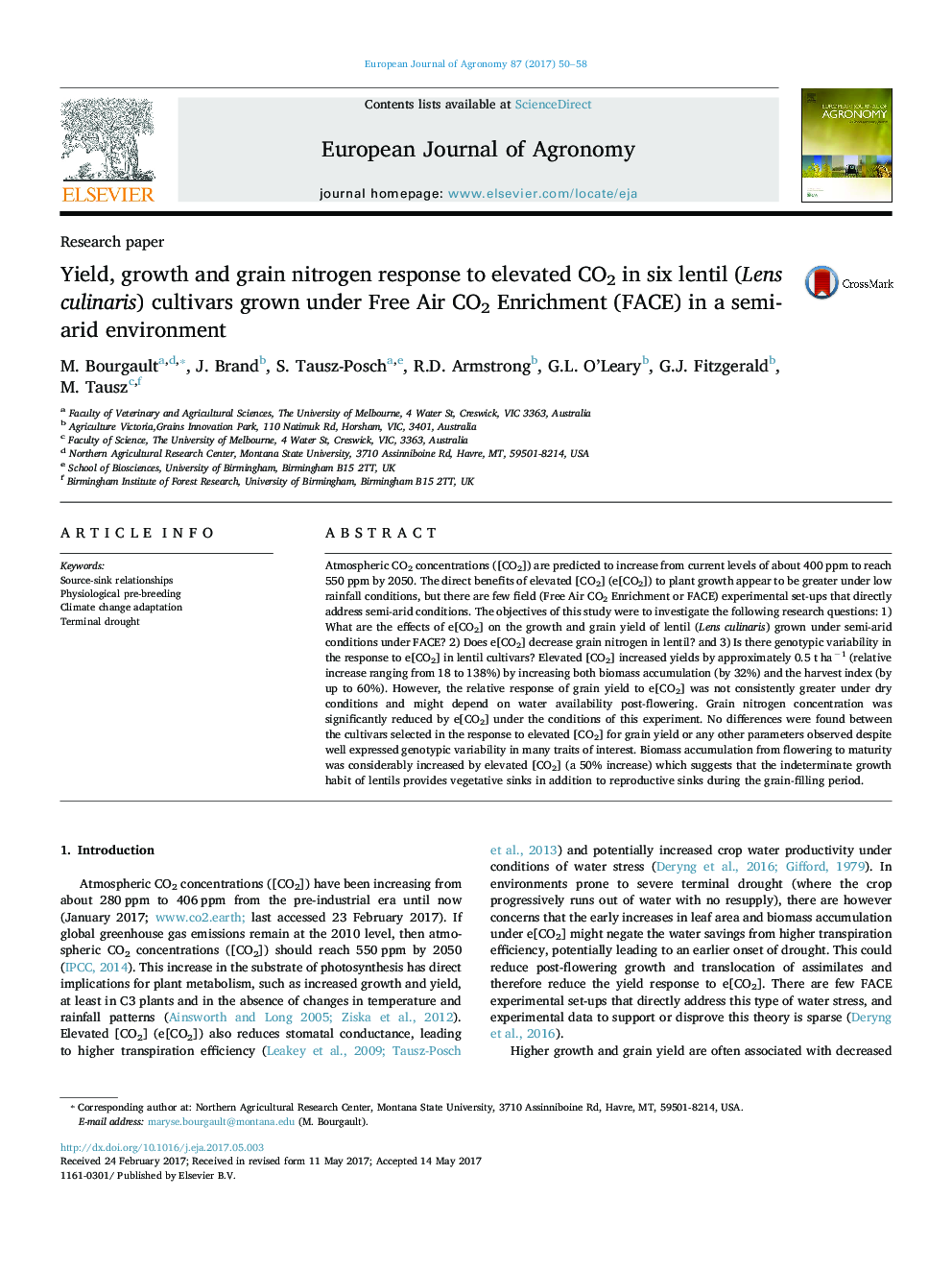| Article ID | Journal | Published Year | Pages | File Type |
|---|---|---|---|---|
| 5761211 | European Journal of Agronomy | 2017 | 9 Pages |
Abstract
Atmospheric CO2 concentrations ([CO2]) are predicted to increase from current levels of about 400 ppm to reach 550 ppm by 2050. The direct benefits of elevated [CO2] (e[CO2]) to plant growth appear to be greater under low rainfall conditions, but there are few field (Free Air CO2 Enrichment or FACE) experimental set-ups that directly address semi-arid conditions. The objectives of this study were to investigate the following research questions: 1) What are the effects of e[CO2] on the growth and grain yield of lentil (Lens culinaris) grown under semi-arid conditions under FACE? 2) Does e[CO2] decrease grain nitrogen in lentil? and 3) Is there genotypic variability in the response to e[CO2] in lentil cultivars? Elevated [CO2] increased yields by approximately 0.5 t haâ1 (relative increase ranging from 18 to 138%) by increasing both biomass accumulation (by 32%) and the harvest index (by up to 60%). However, the relative response of grain yield to e[CO2] was not consistently greater under dry conditions and might depend on water availability post-flowering. Grain nitrogen concentration was significantly reduced by e[CO2] under the conditions of this experiment. No differences were found between the cultivars selected in the response to elevated [CO2] for grain yield or any other parameters observed despite well expressed genotypic variability in many traits of interest. Biomass accumulation from flowering to maturity was considerably increased by elevated [CO2] (a 50% increase) which suggests that the indeterminate growth habit of lentils provides vegetative sinks in addition to reproductive sinks during the grain-filling period.
Related Topics
Life Sciences
Agricultural and Biological Sciences
Agronomy and Crop Science
Authors
M. Bourgault, J. Brand, S. Tausz-Posch, R.D. Armstrong, G.L. O'Leary, G.J. Fitzgerald, M. Tausz,
